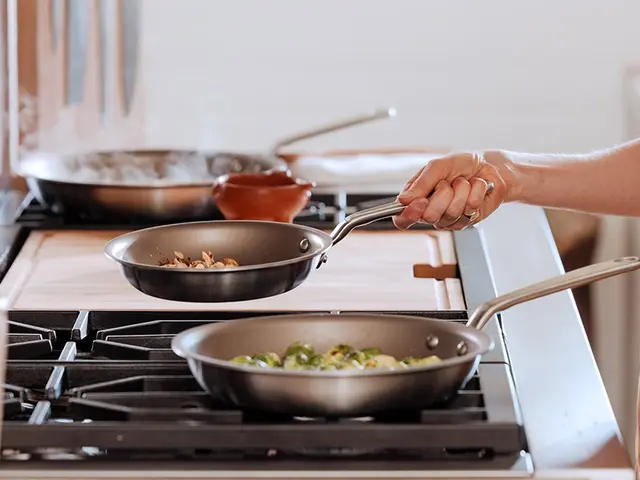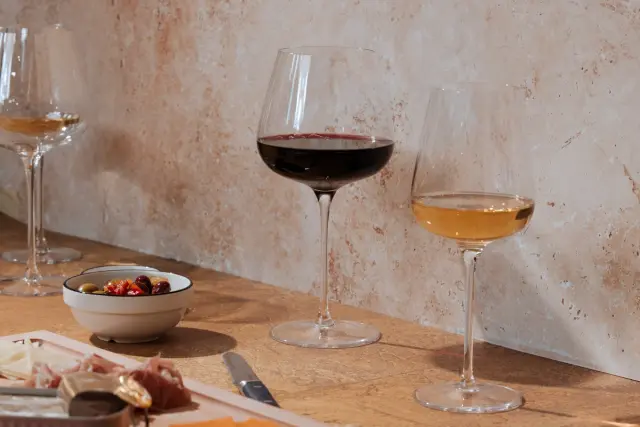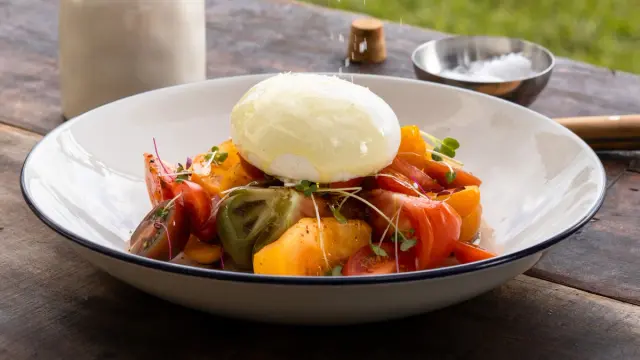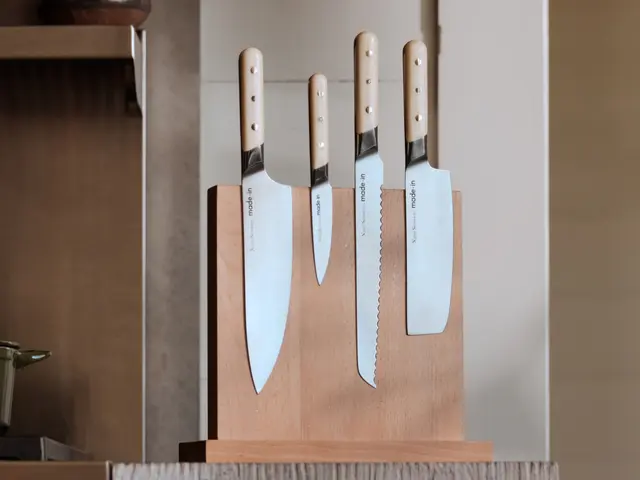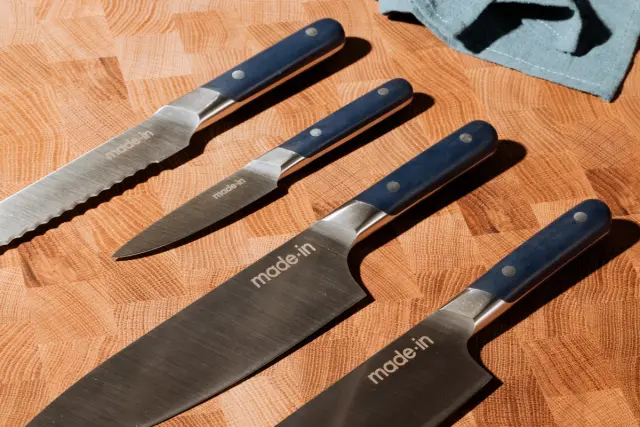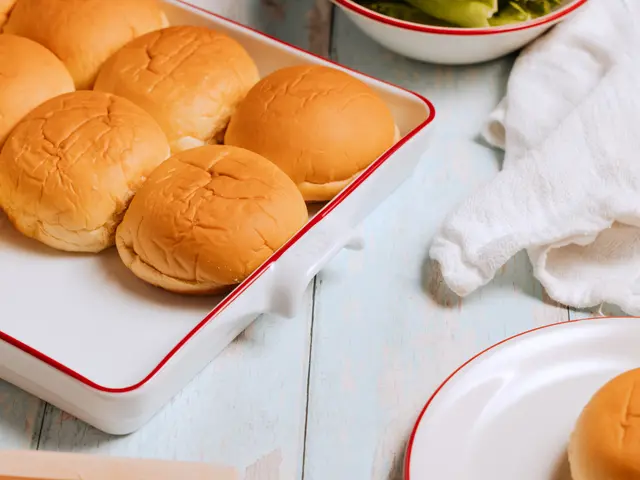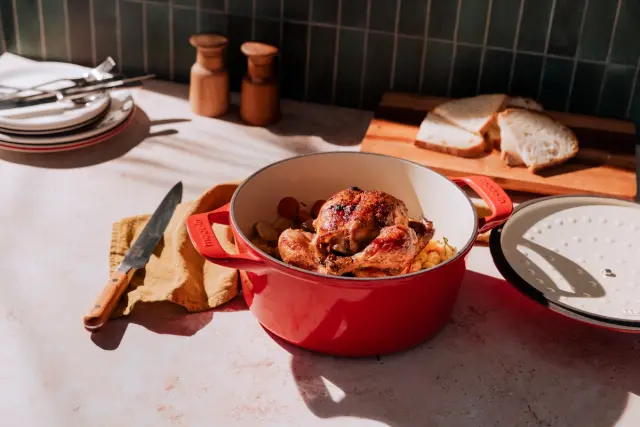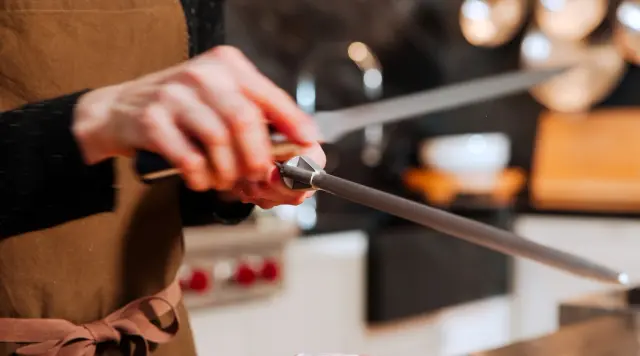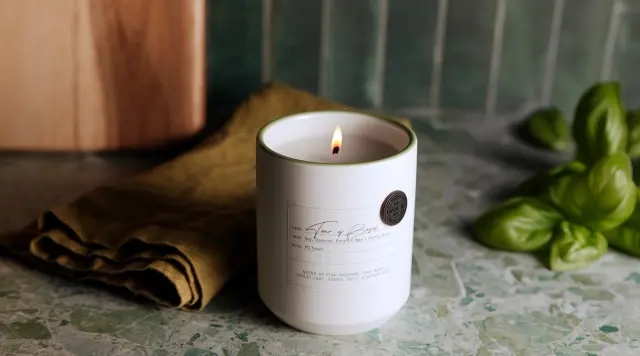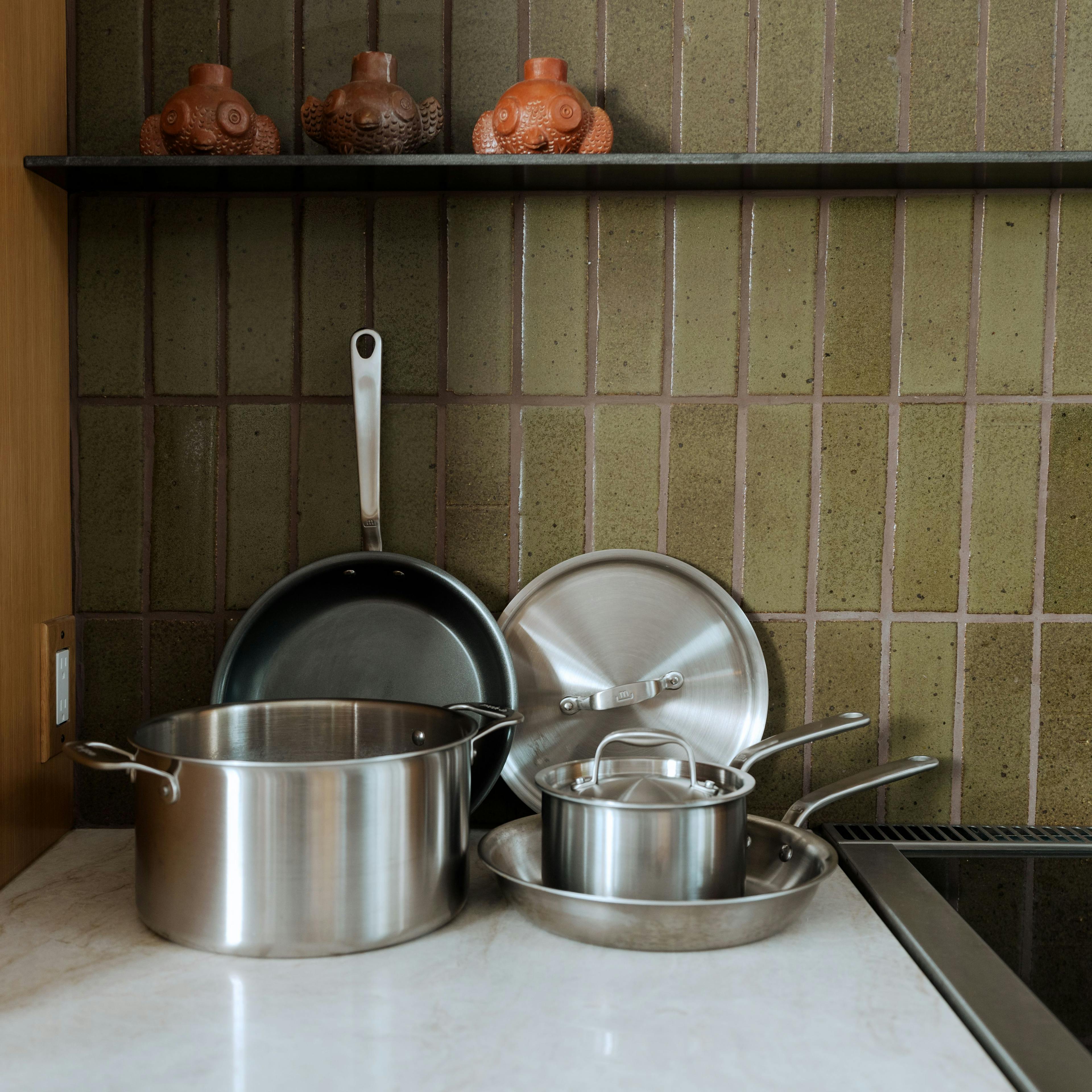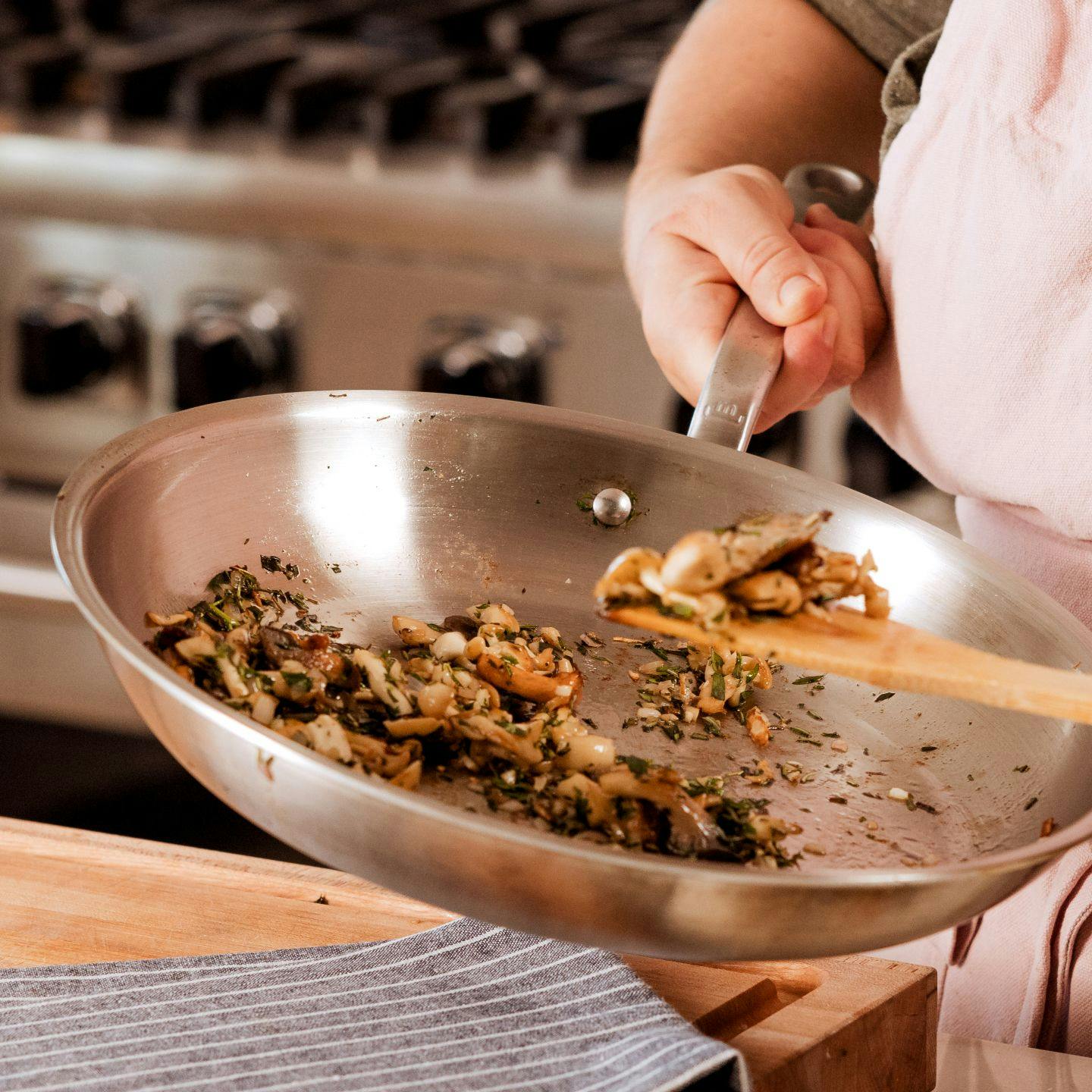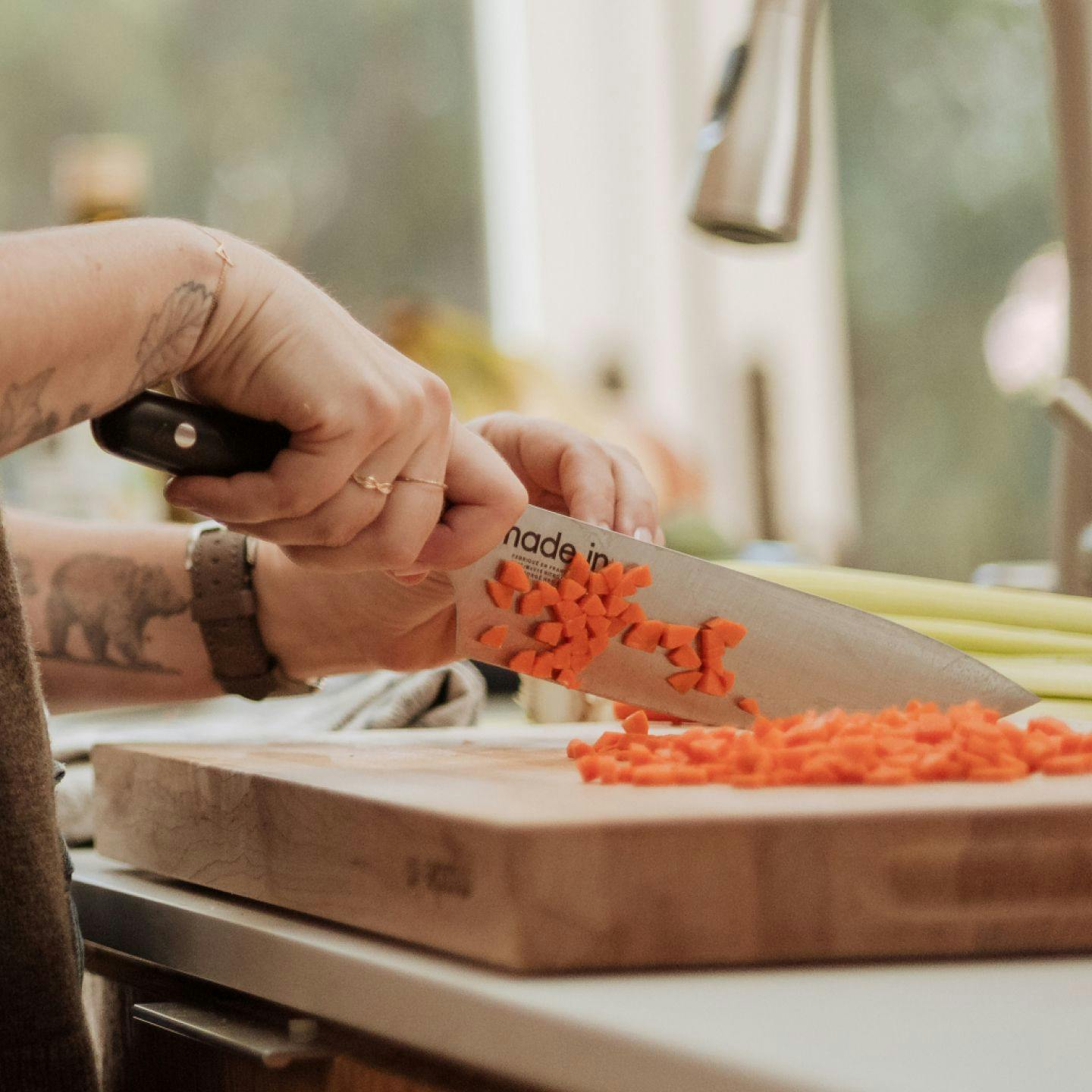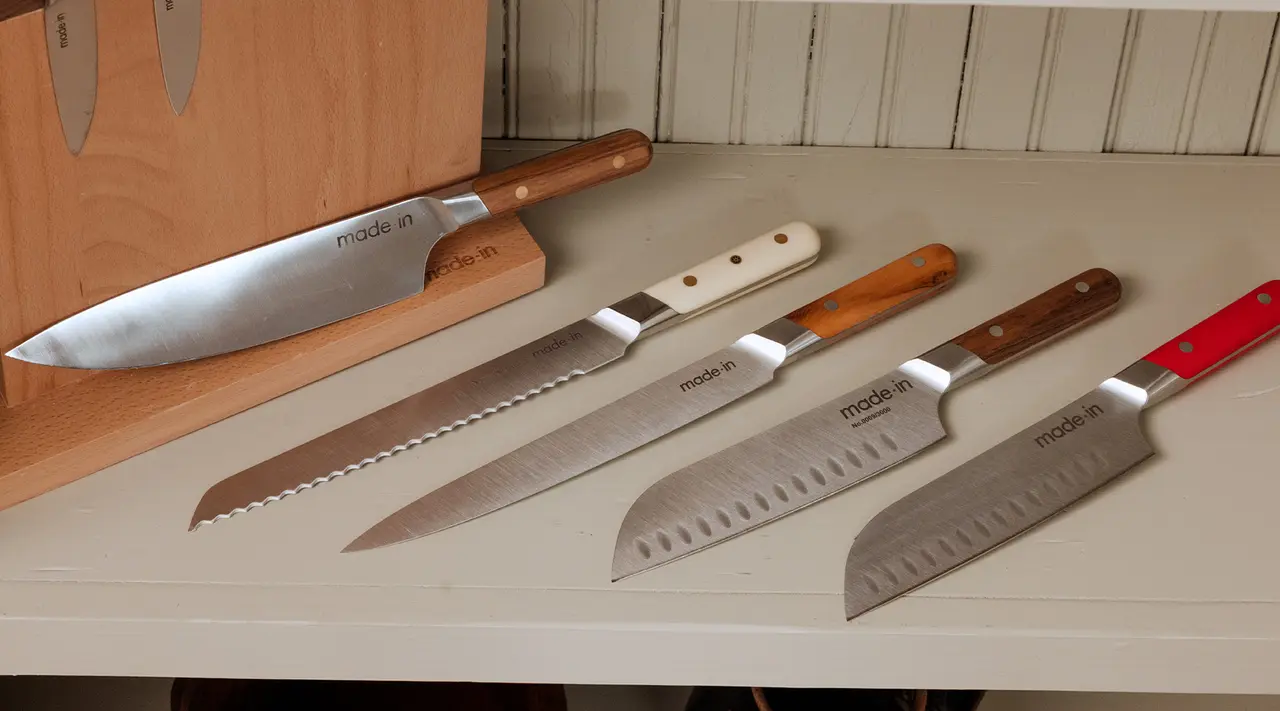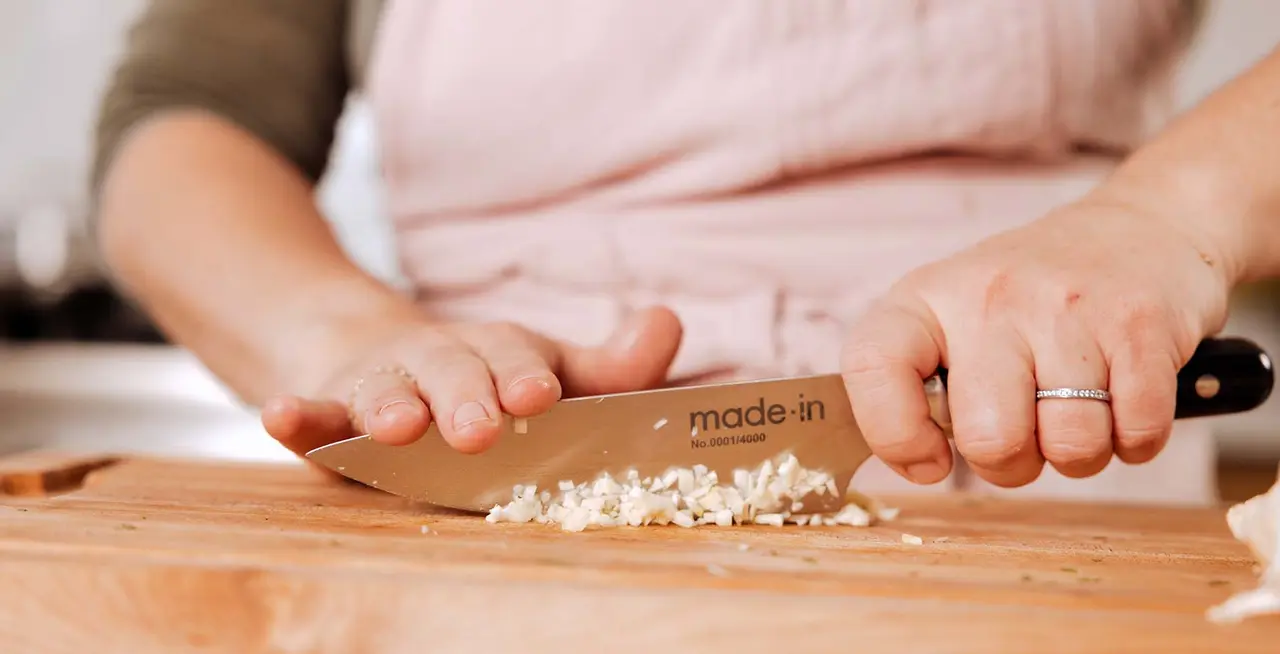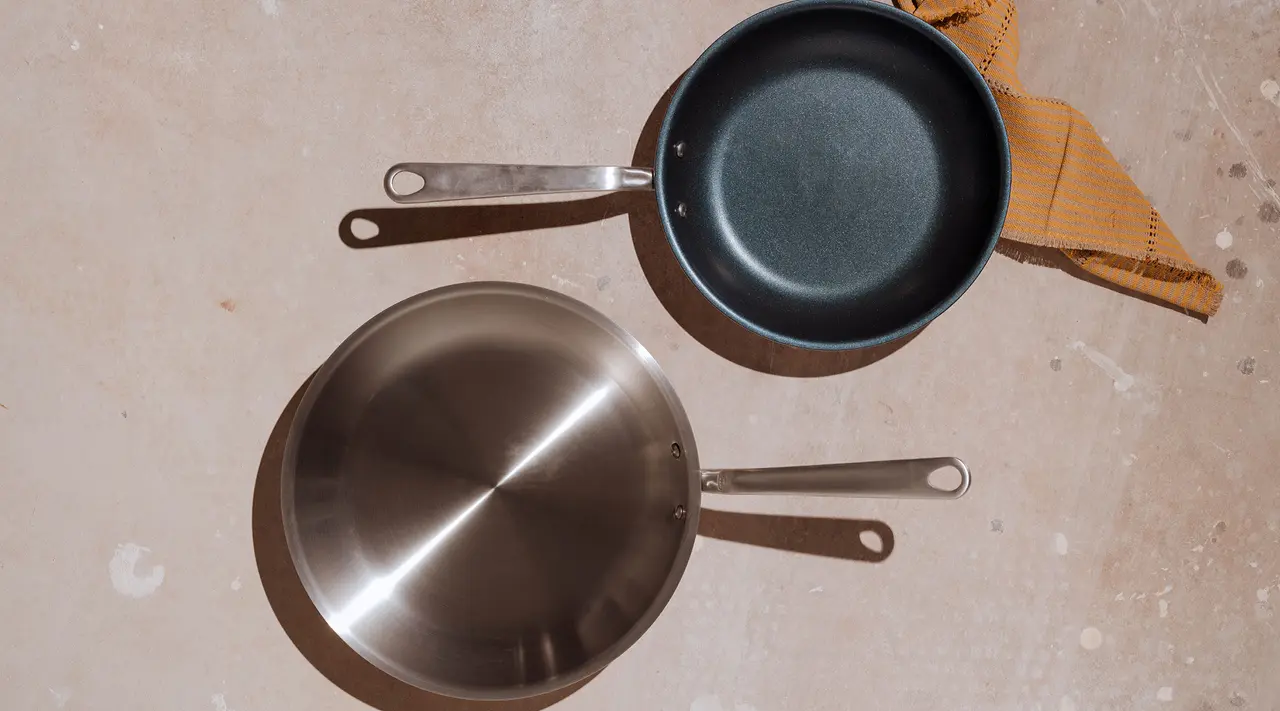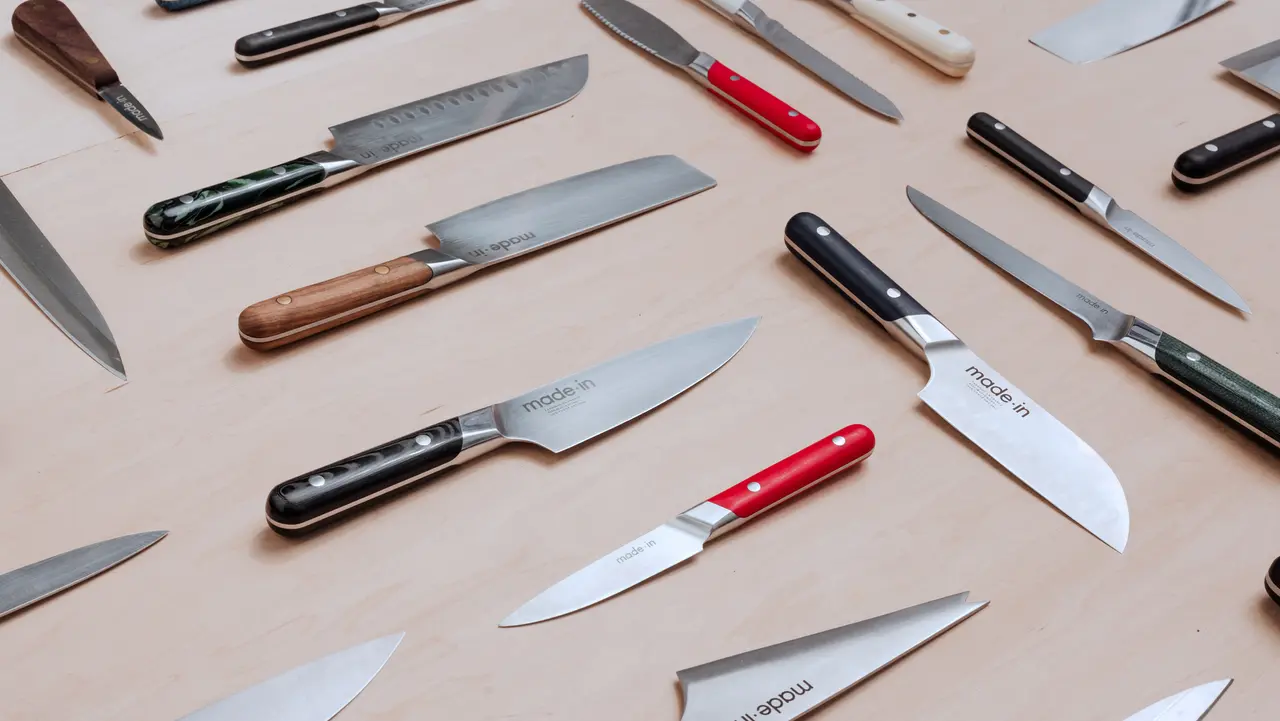In the past few years, the ceramic cookware landscape has grown dramatically. You can currently find ceramic pots and pans in a rainbow of colors at a range of price points, advertised as being able to handle anything traditional, coated non stick cookware can—while being safer and healthier, to boot.
To simplify things, we’ll explain the ongoing debate between ceramic vs non stick cookware, what ceramic cookware is actually made of (hint—it’s not actually ceramic!), and how to pick one or the other for your own kitchen.
What Is Ceramic Cookware?
Rather than glazed, kiln-fired clay (like stoneware or porcelain bakeware), ceramic cookware is actually made of layers of silica, which is derived from sand and applied to each piece of cookware using a process called sol-gel. This non-toxic coating is described as “self-sacrificing,” in that a small amount of it is released every time it’s heated to give ceramic cookware its non stick properties.
Much like non stick cookware, ceramic is made using a base of aluminum or stainless steel (sometimes both), which is what gives it the ability to conduct and circulate heat like the non stick you’re used to.
Advantages of Ceramic Cookware
The main advantage of ceramic cookware over non stick is the fact that, while all of the modern non stick cookware produced and sold in the U.S. is completely safe and free from harmful chemicals like PFOA (we’ll talk more about some of these and associated risks later on), ceramic cookware is and always has been produced without any PFAS whatsoever.
While modern coated non stick cookware is similarly safe, opting for ceramic can provide an added layer of assurance to those nervous about past usage of chemicals in their cookware.
Considerations of Ceramic Cookware
Ceramic cookware isn’t without its considerations. First, there’s the price: ceramic pots and pans tend to come with a higher price tag—especially when you’re buying from trendy brands commonly seen on Instagram. And while you can definitely find a decent ceramic frying pan at an affordable price, there aren’t quite as many budget-friendly options as there are with non stick.
The other drawback to ceramic is that it’s not going to stay non stick forever. This is because of that sol-gel coating mentioned previously—because sol-gel is self-sacrificing, it wears down quickly, sometimes faster than non stick coatings.
What Is Non Stick Cookware?
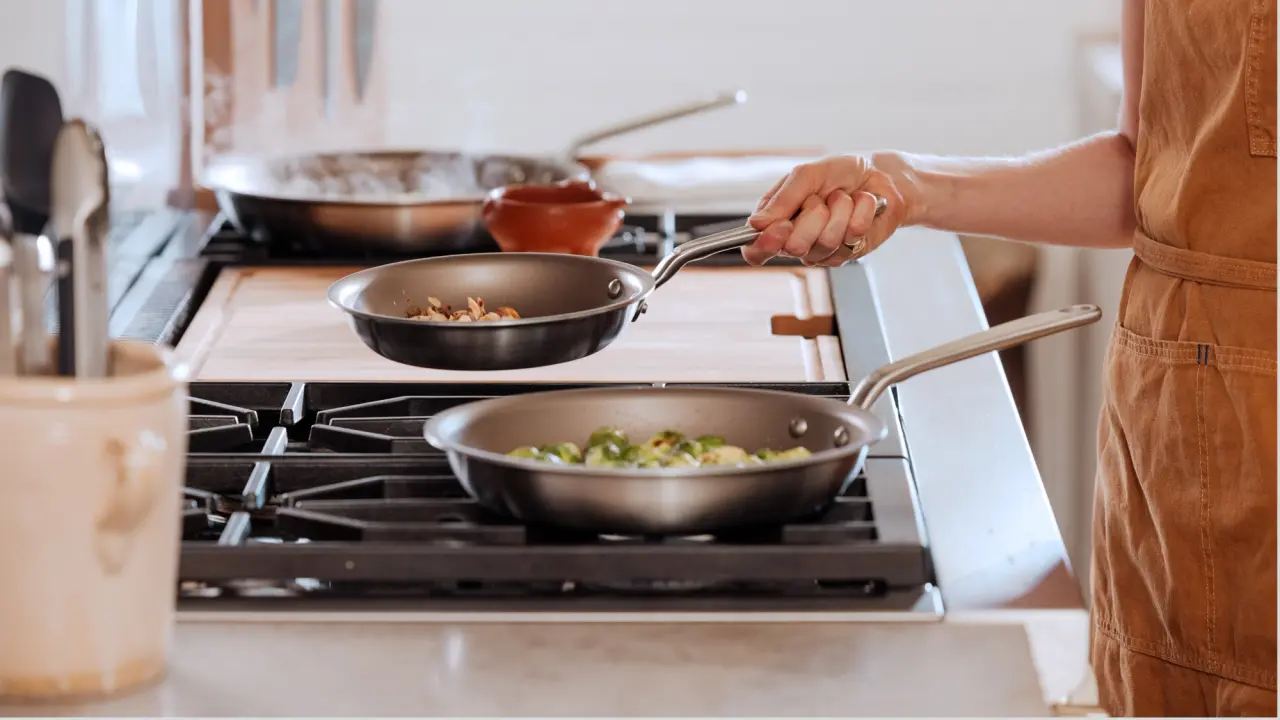
Non stick cookware is made using a metal base—usually stainless steel and/or aluminum—coated with layers of non stick coating, also known by the trade name Teflon. Thanks to this coating, non stick pots and pans have an unmatched ability to repel water and oil, as well as prevent eggs, fish, and other protein-rich foods from sticking.
Advantages of Non Stick Cookware
The non stick surface makes non stick pots and pans much easier to clean and maintain, even without putting them in the dishwasher (which you probably shouldn’t be doing anyway).
Non stick is also one of the cheapest cookware options you can buy, and they’re available at a range of different price points: You can spend as little as $10 on a decent non stick pan (though we still think it’s worth investing more for a higher-quality pan that will last for longer).
Considerations of Non Stick Cookware
While we definitely endorse non stick cookware as a convenient, lightweight, and relatively inexpensive option, we understand that it’s not the best choice for everybody. While non stick lasts much longer than most ceramic cookware, it’s still not built for long-term use: at most, you’ll get a few years out of your pan before the coating starts to wear down.
One of the other hesitations many have about non stick cookware is the fact that it’s long been associated with certain health risks. In the past, certain non stick cookware was manufactured using a chemical called PFOA, or perfluorooctanoic acid. This is part of a family of compounds called PFAS, or per- and polyfluoroalkyl substances, some of which are associated with an elevated risk of health issues.
PFOA has been banned from cookware manufacturing in the U.S. since 2014, but it’s important to do your research to ensure your safety—particularly if you’re using a non stick pan made prior to 2014.
How Do Ceramic and Non Stick Compare?
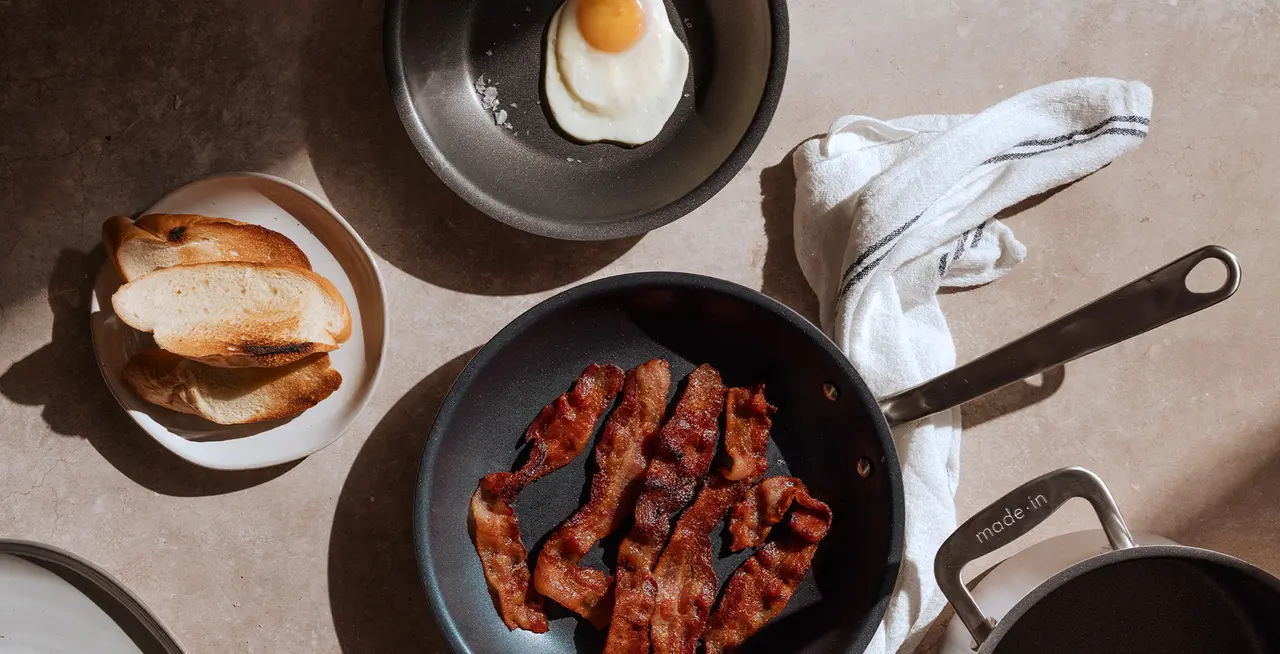
Here’s how ceramic and non stick cookware stack up in terms of performance, durability, and ease of care.
Cooking Performance
Ceramic and non stick cookware perform roughly the same way—both offer a smooth, stick-resistant surface that’s ideal for cooks trying to cut down on oil and butter. A high-quality ceramic or non stick pan will generally do a better job with qualities like heat distribution than a flimsy, poorly-constructed one (especially one made using Award-Winning Stainless Clad construction, like ours).
Since neither type of pan is recommended for consistent use over high heat, they’re also not recommended for high-heat cooking methods like deep frying. Both options are typically induction compatible.
Durability
While neither ceramic cookware nor non-stick cookware is built to last as long as, say, a stainless steel or enameled cast iron pan, non stick definitely surpasses ceramic in terms of durability. A properly cared-for non stick pan can last considerably longer than a ceramic pan—even a really well-made ceramic pan.
Ceramic’s main advantage over non stick is that while not all non stick cookware is PFOA-free (like if it was made prior to 2014, or in a country without an active ban on PFOA), all ceramic cookware is free of any and all PFAS.
Maintenance and Care
While constructed differently, ceramic and non stick pans should both be treated roughly the same way—that is to say, delicately. They should both be hand washed using a gentle dish soap and soft sponge to keep from damaging the coating, and you should similarly avoid using metal utensils when cooking with them. You should also avoid cooking sprays when cooking with either option, as these can build up on the surface of your pan and become impossible to remove without damaging the coating.
It’s generally recommended to cook over low or medium-low heat when using ceramic or non stick—higher is fine on an infrequent basis, but keeping it low is best to preserve the coating (and there are other pans better-suited to high heat cooking, anyway). Be sure to always heat them with oil or an ingredient in the pan, and while they’re often oven-safe, it’s best to avoid putting them in a very hot oven (think higher than 500F) for extended periods of time.
Which Cookware Option is Right for You?

Like with any new piece of cookware, the best choice for your specific needs is completely up to you. Both options have upsides and drawbacks, and it all depends on your budget, cooking habits, and safety preferences.
Ceramic cookware comes in a range of attractive colors, and provides a cooking experience on par with that of non stick, though with a relatively limited lifespan; on the other hand, non stick is more durable, with a coating that won’t break down within just one or two years.
Ready to Shop?
We never want you to stress out about your cookware. And since nothing should come between you and your late-night breakfast tostadas, we endorse whatever pan—ceramic, non stick, or otherwise—you decide to add to your collection.
